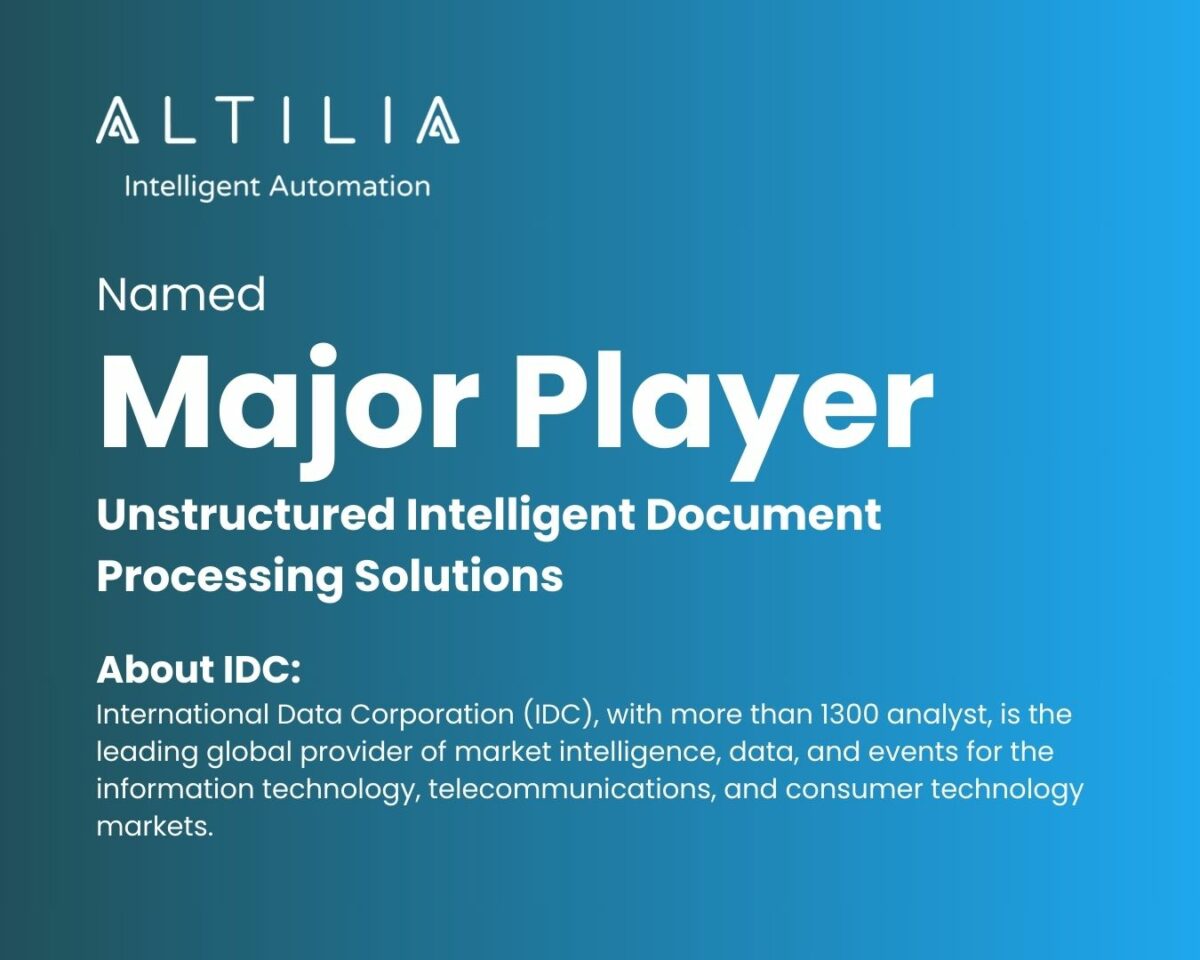In the financial sector, where large volumes of unstructured data and complex workflows are the norm, AI solutions can offer huge benefits: from automating manual processes to enhancing decision-making and ensuring compliance.
However, companies often face a critical choice when deciding to implement an AI solution for the first time. Generally, the decision is choosing between two distinct approaches: a “quick win” solution, which is relatively easy to deploy but offers limited long-term benefits, or a more structured, comprehensive solution, which requires greater effort and resources to implement but promises a significantly higher return on investment. Let’s dive deeper into each option and their implications.:
- “Quick Wins” or Human Demanded Solutions:
These are ready-to-use AI tools that operate based on explicit user input. They are fast to implement, cost-effective, and deliver immediate productivity boosts but limited to a specific task.- Pros: Quick setup, user-friendly, minimal data requirements.
- Cons: Limited flexibility, lack of contextual understanding, not suitable for complex tasks.
- Data Demanded Solutions:
These leverage vast and diverse datasets to create tailored, strategic AI applications. While they take longer to implement, they provide advanced capabilities like predictive analytics and adaptive workflows.- Pros: High adaptability, personalized solutions, strategic business impact.
- Cons: Requires high-quality data, longer development time, and greater investment.
Is it possible to combine the advantages of both approaches? Maybe it is.
In this article, we’ll explore a structured, five-step process for successfully implementing an AI solution that balances the immediate gains of “quick wins” with the enduring value of long-term strategic initiatives. To illustrate this process, we’ll follow a real-world example: a financial institution, “Bank X,” leveraging AI to automate its risk analysis and streamline operations.
Step 1: Define Your Objectives
Bank X, a fictional major financial institution, struggled with inefficiencies in evaluating credit risk. Analysts manually processed financial statements from various companies, often taking up to 3 days per report. Just this first step is creating a significant bottleneck in the whole process:
- Errors due to manual data extraction.
- Limited resources to allocate in the financial statement analysis,
- Little time for complex but high-value tasks.
To solve these challenges, Bank X set a clear goal: Automate the extraction and analysis of financial statement data to reduce processing time and to improve the accuracy.
Approach breakdown
- Analyze business pain points: Start by identifying critical inefficiencies. For Bank X, the repetitive nature of manual analysis was a prime candidate for automation.
- Set measurable KPIs: Goals must be quantifiable to assess success. Bank X focused on two: Time reduction and the accuracy improvement in data extraction.
- Evaluate use cases: While chatbots for customer support can be considered “quick wins”, Bank X pursued a data-driven AI approach for a lasting impact on risk management.
By defining precise objectives, Bank X clarified the scope of the project and the target outcomes, moving to the next phase: understanding the data required to meet these goals.
Step 2: Manage and prepare your data
The next challenge for Bank X was its large repository of unstructured data: PDFs, CSVs, and PowerPoint presentations filled with financial statements and scattered across different databases. Turning these documents into structured, machine-readable formats required:
- Extracting key metrics: e.g.: revenue, debts, and cash flow indicators.
- Ensuring data consistency: Validating and cleaning extracted data to ensure accuracy.
- Building the infrastructure: Leveraging cloud solutions and advanced Optical Character Recognition (OCR) tools for scalability.
- Gather all the data in one place: To create an efficient AI solution, data must be easy to access.
Approach breakdown
- Identify relevant data sources: Begin with a thorough audit of existing data—structured (databases) and unstructured (PDFs, reports). For Bank X, financial reports were the primary data source.
- Clean and validate the data: High-quality data is crucial. Processes like deduplication, normalization, and error-checking help prevent downstream issues.
- Infrastructure readiness: Robust infrastructure, such as a cloud platform, ensures the AI system can process large volumes of documents efficiently without worrying of the maintenance or updates of the infrastructure .
By transforming unstructured financial data into clean, structured formats and a robust infrastructure, Bank X created the necessary foundations for the next step: training the AI model to analyze this data effectively.
Step 3: Select and train your model
With a structured dataset in place, Bank X implemented an AI solution combining:
- Choosing the right technology: A pre-trained OCR model for extracting text across different file formats and a fine-tuned AI model for summarizing key financial metrics.
- Training and Fine-Tuning: Historical financial reports were used to train the AI, teaching it to identify patterns across balance sheets and income statements.
- Testing and Validation: Outputs were rigorously validated by human reviewers to minimize inaccuracies.
Approach breakdown
- Choose the right AI model:
- Pre-trained models (like OCR) to have a generic tool that can be used immediately.
- Fine-tuning custom models are best suited for specific business requirements such as summarizing financial reports from a specific format.
- Train and validate: Use historical data to “teach” the AI. Human oversight ensures that the AI output aligns with business standards.
- Iterate and improve: Continuously test and refine the model to ensure optimal accuracy and reliability.
Step 4: Test your model thoroughly
Even the most advanced AI models can produce errors or unexpected results if not rigorously tested. Testing ensures the model’s accuracy, reliability, and scalability, reducing risks before deployment. A robust testing process uncovers weaknesses, such as biased outputs or performance bottlenecks, allowing adjustments that ensure the solution works effectively in real-world conditions.
Best practices for testing an AI model
- Start with small, controlled data sets: Use a smaller, representative subset of your data for initial tests to quickly identify potential issues without overwhelming the system.
- Evaluate against benchmarks: Compare the model’s performance to established metrics, such as:
- Accuracy: The proportion of correctly predicted outcomes compared to the total number of predictions, indicating overall performance.
- Precision: The proportion of true positive results among all positive results predicted by the model, highlighting how relevant the predictions are.
- Recall: A metric used to evaluate the performance of a machine learning model, especially in classification tasks. It measures the model’s ability to correctly identify all relevant instances (true positives) from the dataset, showing how well the model identifies relevant instances.
- Latency: The time it takes for the model to process an input and produce an output, reflecting the system’s responsiveness.
- Incorporate real-world scenarios: Simulate actual business use cases, such as processing financial statements with varying formats and quality, to evaluate performance in realistic conditions.
- Stress-test for scalability: Assess how the model performs under heavy workloads, such as analyzing hundreds of reports simultaneously, to ensure it remains reliable as usage scales.
- Monitor for bias and hallucinations: Examine outputs for accuracy, fairness, and relevance. Address any biases introduced by the data or inconsistencies in responses.
- Involve human oversight: Have subject-matter experts review test results to spot nuanced errors and provide feedback for fine-tuning.
Now, the trained and tested AI model produced accurate financial insights that could now be integrated into Bank X’s risk management workflows.
Step 5: Integrate and monitor the solution
With the AI model ready, Bank X integrated it into their existing risk management systems:
- Deployment: The AI solution connected to real-time data feeds, automating the analysis of incoming financial reports.
- Performance Monitoring: KPIs were tracked to ensure continuous improvement:
- Processing time was reduced and now it’s no more an operative bottleneck.
- Data accuracy was consistently high.
- Team Training: Analysts were trained to leverage AI outputs, shifting their focus to interpreting complex cases.
Approach breakdown
To successfully deploy the solution, it was essential to ensure a seamless integration with existing systems, minimizing any potential disruptions to established workflows. Once implemented, performance metrics must be continuously monitored, focusing on real-time KPIs such as accuracy, processing speed, and user adoption rates, to evaluate the solution’s effectiveness. Additionally, adopting a framework of continuous learning allowed models to be updated regularly with new data, ensuring they remain adaptable to evolving business requirements. Finally, training and empowering teams is crucial; providing tailored programs helps align AI capabilities with daily workflows, fostering greater user adoption and maximizing the solution’s impact
Conclusion
Implementing AI solutions requires a structured and connected process: setting clear goals, managing high-quality data, training robust models, and ensuring a seamless integration with existing systems. As shown in the case study of Bank X, this approach can significantly enhance operational efficiency, reduce manual workload, and improve decision-making. However, such transformations come with challenges.
AI implementation can be costly, requiring investment in infrastructure, expertise, and continuous improvement. Moreover, many organizations lack the internal resources or specialized knowledge to develop and maintain an AI solution entirely in-house.
This is where Altilia comes in. Altilia’s Smart knowledge platform is designed to overcome these barriers, offering:
- Ease of integration: A fast and adaptable AI solution tailored to the client’s specific needs.
- Scalability and flexibility: A platform capable of growing with your organization and accommodating new challenges.
- Advanced document processing capabilities: Seamlessly processes large volumes of unstructured documents, such as contracts, financial statements, and reports, extracting valuable insights and automating workflows to save time and reduce errors.
- End-to-end support: Altilia’s dedicated team of consultants will guide you through every step of the implementation journey—defining objectives, preparing data, training models, and ensuring seamless integration into your existing systems.
With Altilia, your organization can unlock the full potential of AI without the usual complexity, achieving tangible results quickly and efficiently. Contact us today for a consultation and start your journey toward smarter, more efficient operations.








